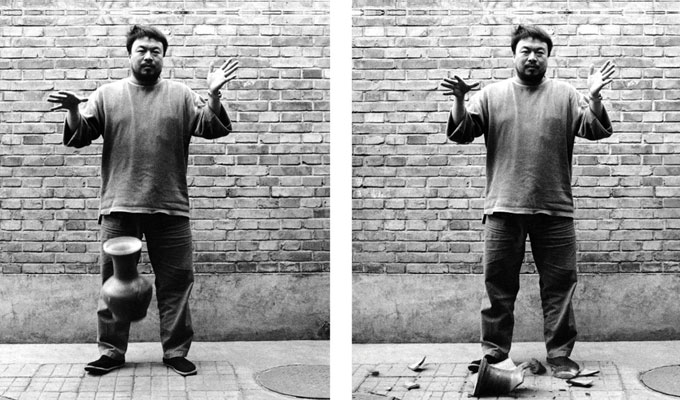When art is destroyed, it often make big news, and rightfully so. Whether by accident, such as the 20 million objects reduced to dust by a devastating fire at the National Museum of Brazil; or by calculated cruelty, such as the ongoing obliteration of Syria and Iraq’s cultural heritage in times of war.
We may never have gone to Palmyra to admire its Roman ruins, nor have seen the 12,000-year-old skeleton once in Rio, yet still we feel a collective sense of loss. Destruction evokes pain, and we puzzle as to how and why all of a sudden the “delete” button was pressed. This strong emotional response may be the motivation behind ruining art objects, while for artists, it can be a powerful mechanism to prove a point.
In the case of British street artist, Banksy, the delete button was a fat $1.4 million under the hammer, which triggered his famous “Girl with Balloon” to self-destruct via an inbuilt shredder. This ingenious trick was a rather poetic way of snubbing the art market, yet paradoxically upping the value of the now shredded paper portrait.
While Banksy may no longer have owned the work when it went up for auction, he demonstrates the inextricable link between object and creator. The integrity of the work remains his. Anyone else who dared destroy a million dollar painting might have found themselves in a spot of trouble.
Like Ai Weiwei. In 1995, the artist smashed an ancient Chinese pot to make his photo triptych, “Dropping a Han Dynasty Urn”. That was not until he had dribbled paint all over some more 2,000-year-old ceramics for his “Coloured Vases” and decorated one rather more carefully with the Coca Cola logo. Ai Weiwei’s deliberate vandalising of cultural antiques was deeply criticised, described as “devastating history”. Others saw the stunt as proof of the artist’s “show-stopping conceptual brilliance”.
According to UNESCO, intentionally destroying cultural heritage is considered a war crime. So where does Ai Weiwei stand, does he get away with it because he bought and owns these objects, therefore, can do what he pleases with them? Or is it ok to casually smash irreplaceable antiques as long as you’re a big fancy artist?
“Artist or collector”, I should add, for in 2012 foremost contemporary Chinese art collector, Uli Sigg, took one of his prized pieces, Ai Weiwei’s Coca Cola painted Han pot and smashed it to the ground for a new photo triptych, “Fragments of History”. An expensive parody of an already controversial work.
Just as Banksy’s self-shredding “Girl with Balloon” supposedly doubled in value, so Ai Weiwei and Uli Sigg’s urn dropping stunts have driven their market price way beyond the value of the original pots.
Yet, in a world where material culture from millennia past is being recklessly destroyed in the face of war, I find Ai Weiwei and Uli Sigg’s pot smashing tasteless, rich man’s play. Yes, Banksy’s piece is now even-more-stupidly expensive, but the intention behind his stunt is more meaningful. It is a critique of the irony that street art, ultimately vandalism, can make millions once churned through the unequal cogs of the art market.
He may have executed his performance with the rather underwhelming paper shredder but Banksy, unlike Ai Weiwei, really smashes it.









